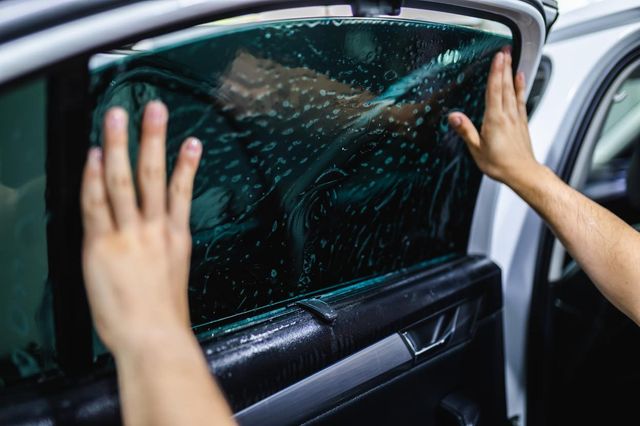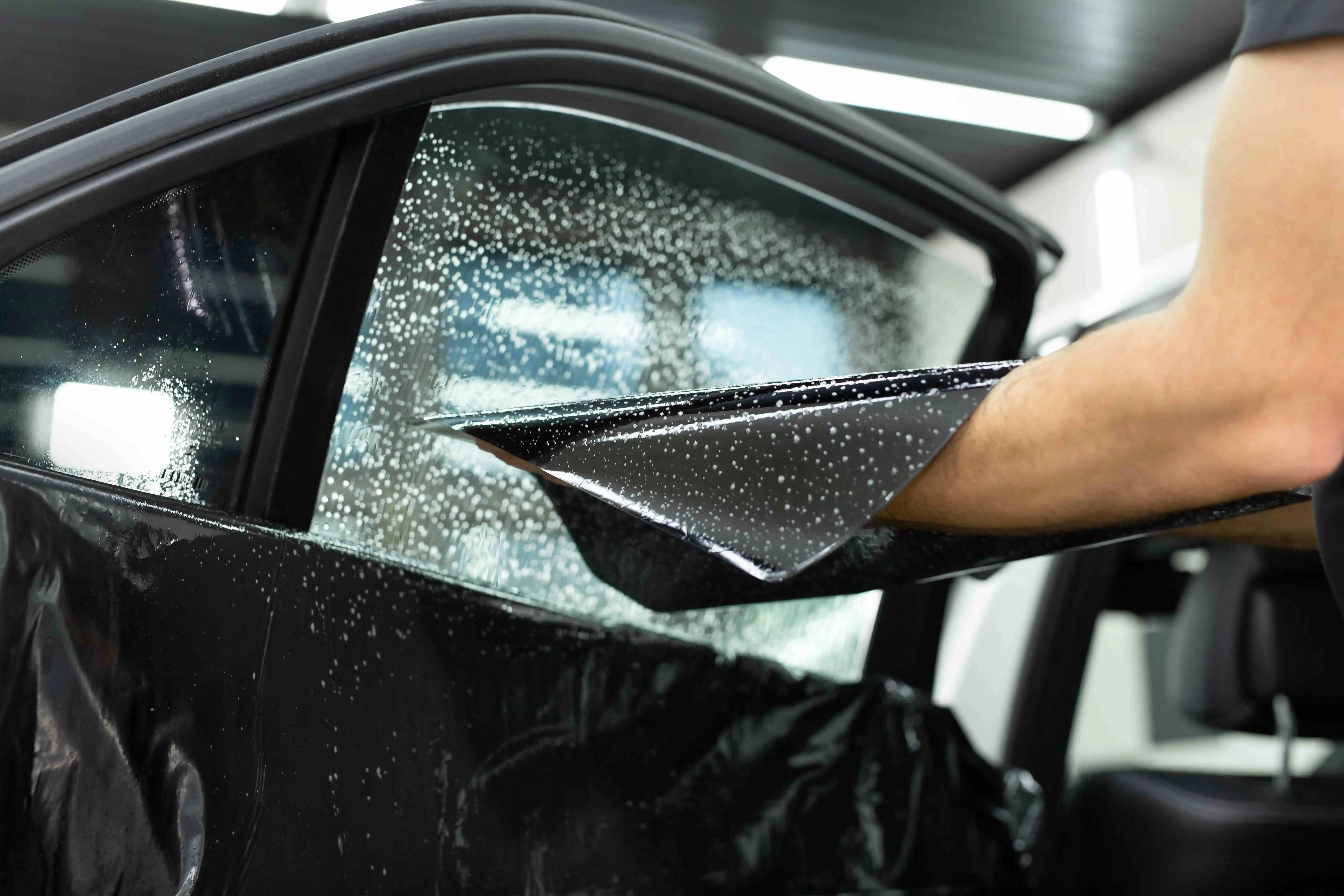Automobile Window Tinting: Enhance Your Vehicle's Design and Personal privacy
Automobile Window Tinting: Enhance Your Vehicle's Design and Personal privacy
Blog Article
Home Window Tinting Laws and Standards: What You Required to Know Before Tinting Your Auto
Prior to continuing with window tinting for your vehicle, it is vital to acquaint on your own with the diverse laws and guidelines that govern this technique throughout various states. These regulations determine the acceptable levels of color darkness, typically measured by noticeable light transmission (VLT) percentages, and include certain terms for front windshields targeted at making sure roadway safety and security. In addition, certain jurisdictions may supply clinical exemptions for people with certifying conditions. Comprehending these complexities can conserve you from possible legal implications, yet what are the particular policies in your state?
Summary of Home Window Tinting Regulations
Home window tinting regulations are regularly subject to variation throughout different territories, reflecting neighborhood guidelines and safety and security considerations. These legislations dictate the permissible degrees of tint darkness and reflectiveness on automobile home windows, making sure that drivers keep sufficient presence while also protecting against damaging UV rays and warm.
The majority of policies categorize window tinting based upon the Visible Light Transmission (VLT) percentage, which shows the quantity of light that can go through the window. Usually, reduced VLT percents indicate darker colors. Legislations commonly separate in between the front, side, and rear windows, with stricter limitations put on the front windscreen to enhance security for both the chauffeur and other road customers.
Additionally, some territories impose restrictions on the reflectivity of the color, stopping too much glow that might harm visibility. Exemptions to these legislations might exist for people with details medical conditions requiring additional sun defense. Conformity with window tinting guidelines is essential, as violations can result in penalties, required elimination of the tint, and potential boosts in insurance coverage premiums. It is essential for car proprietors to acquaint themselves with local regulations before continuing with window tinting installments.
State-by-State Tint Regulations
Recognizing the specific home window tinting laws in each state is crucial for car proprietors looking for to abide by the legislation. Each state in the united state has established its own set of rules controling window tinting, which can vary considerably. These laws typically determine the permitted levels of tint darkness, the kinds of windows that can be tinted, and any medical exemptions that might apply.
As an example, states like California have stringent limitations on tint darkness for front home windows, while others, such as New Mexico, might allow darker colors. Additionally, specific states mandate details visibility percentages for different home windows, including the windscreen, front side home windows, and rear home windows. It is vital for cars and truck proprietors to familiarize themselves with their state's regulations to stay clear of potential fines or fines.
In addition, some states may require a certification sticker to be positioned on tinted home windows, indicating conformity with state laws. Failure to stick to these laws not just runs the risk of legal consequences yet can likewise influence security and visibility while driving. Consequently, vehicle owners must carry out detailed research study or speak with local authorities to make sure full understanding and conformity with state-by-state color regulations.
Allowed Color Degrees and Types
Many vehicle proprietors might be stunned to find out that allowed tint degrees and kinds vary commonly across various states. Each state has actually established its very own laws concerning the permissible darkness and reflectivity of window color, frequently measured by Visible Light Transmission (VLT) percentages. VLT describes the quantity of light that can travel through the tinted home windows; therefore, a lower portion indicates a darker tint.

Additionally, the kinds of tint products enabled can vary, with some states restricting mirror-like or metallic surfaces. It is necessary for vehicle proprietors to acquaint themselves with their state's details legislations to make sure compliance. Non-compliance can cause fines, necessary elimination of the color, or other lawful repercussions, making it critical to comprehend these policies before waging installation.
Medical Exceptions for Tinting
While not all states supply allocations for clinical exemptions relating to window tinting, those that do identify the necessity for certain people to enhance visibility and comfort due to medical problems. Numerous clinical problems, such as lupus, skin cancer, and specific eye problems, can provide people specifically delicate to sunshine. As a result, these people may call for darker colors to shield themselves from unsafe UV rays and glow.

It is essential to note that despite having a medical exception, there may still be restrictions on the degree of color enabled. Compliance with state go to website laws makes certain additional resources that individuals are both protected and within lawful restrictions. Those considering clinical exemptions ought to contact their local Division of Electric motor Vehicles or equivalent authority to recognize the needs and treatments necessary to request an exception effectively.
Charges for Non-Compliance
Failing to adhere to window tinting laws can bring about considerable fines, which differ by state. Law enforcement firms are encouraged to provide citations for cars that do not follow the specified tinting laws. These penalties normally consist of penalties, which can range from moderate amounts to a number of hundred dollars, relying on the extent of the offense and the state in inquiry.
In some territories, duplicated offenses might lead to rising fines or added penalties, such as obligatory court appearances. Non-compliance may require the removal of illegal tinting, often at the proprietor's expense. In extreme situations, regular culprits may deal with suspension of their automobile registration till compliance is achieved.
In addition, insurance policy effects might occur from obtaining multiple citations for home window color infractions. Insurance providers may view such infractions as a sign of riskier actions, possibly leading to increased premiums or difficulty in protection.
To prevent these fines, it is important for automobile owners to familiarize themselves with their regional home window tinting laws and ensure that their automobile complies (Window Tinting). This aggressive method not just stays clear of lawful ramifications however additionally advertises roadway safety
Final Thought

Many guidelines identify home window tinting based on the Visible Light Transmission (VLT) portion, which shows the amount of light that can pass with the window. Compliance with home window tinting guidelines is critical, as violations can result in penalties, compulsory removal of the tint, and potential boosts in insurance premiums.Comprehending the specific home window tinting policies in each state is important for vehicle proprietors seeking to abide with the regulation. These guidelines usually dictate the permitted degrees of color darkness, the kinds of home windows that can be tinted, and any kind of clinical exemptions that may use.
For instance, states like California have rigorous constraints on tint darkness for front home windows, while others, such as New Mexico, may permit darker tints.
Report this page